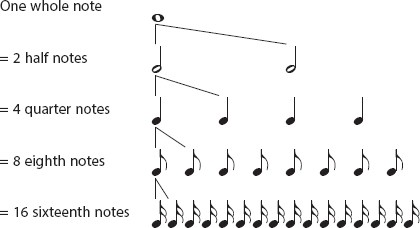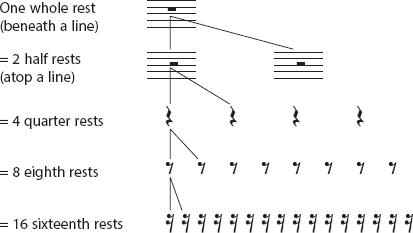Notes and Rests
The longest note in common use is the whole note ![]() . A half note
. A half note ![]() lasts for half the time of a whole note, a quarter note
lasts for half the time of a whole note, a quarter note ![]() lasts for a quarter of the time, an eighth note
lasts for a quarter of the time, an eighth note ![]() for an eighth, a sixteenth note
for an eighth, a sixteenth note ![]() for a sixteenth, and so on. (We are dealing here with proportional lengths; how long any note lasts in absolute time depends on the tempo: see page 7).
for a sixteenth, and so on. (We are dealing here with proportional lengths; how long any note lasts in absolute time depends on the tempo: see page 7).

When the short notes come in groups, they can also be notated as shown at the top of the next column.
The flags — they look more like pennants — at the sides of the note stems have been connected into horizontal beams for easier reading:
Composers use not only sounds but also short silences called rests.

Compare the whole-
The shorter rests have their own sort of flags. As with notes, more flags can be added to rests, with each flag cutting the time value in half. Thus, three flags on a rest ![]() make it a thirty-
make it a thirty-